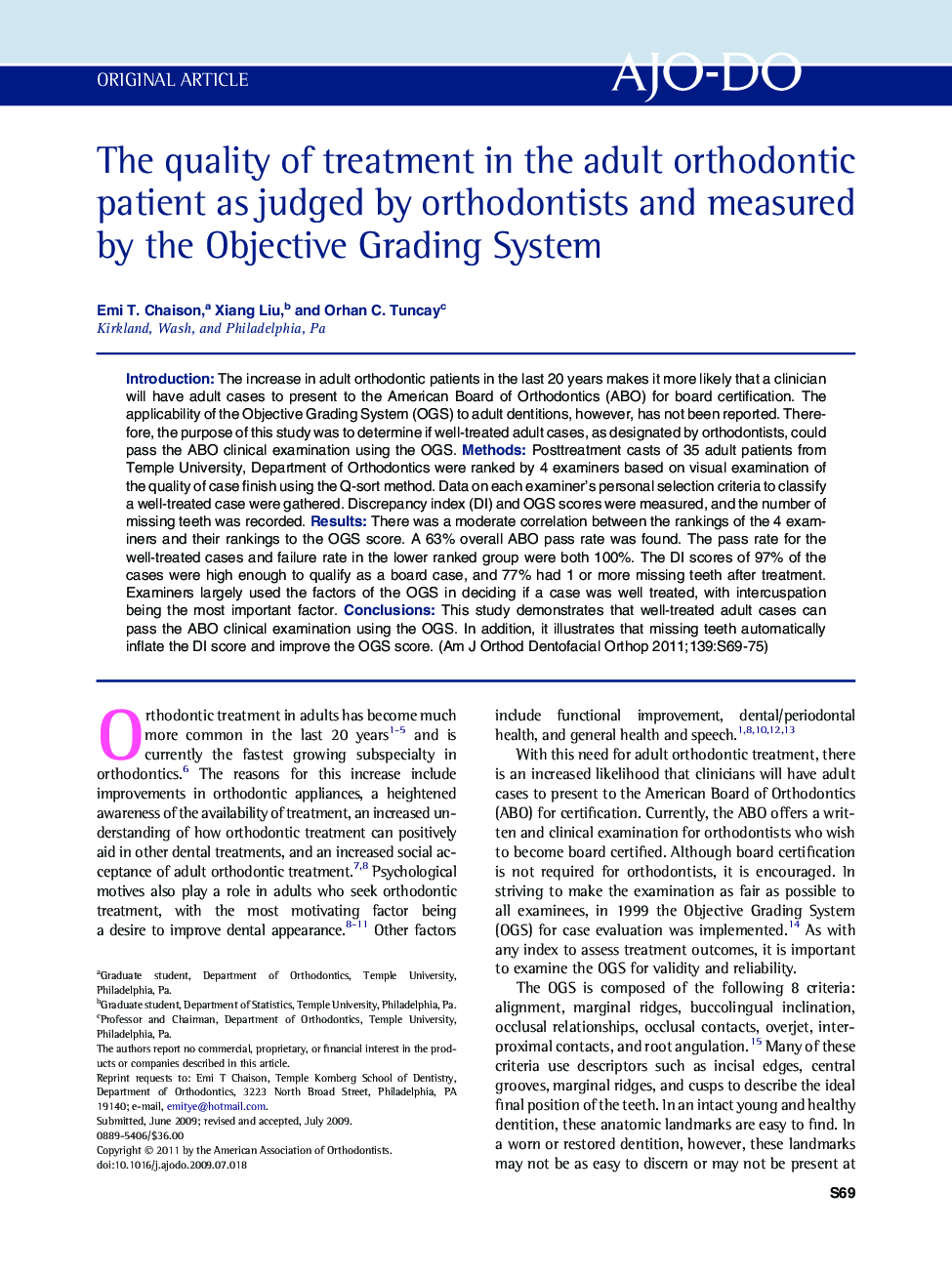| Article ID | Journal | Published Year | Pages | File Type |
|---|---|---|---|---|
| 3118966 | American Journal of Orthodontics and Dentofacial Orthopedics | 2011 | 7 Pages |
IntroductionThe increase in adult orthodontic patients in the last 20 years makes it more likely that a clinician will have adult cases to present to the American Board of Orthodontics (ABO) for board certification. The applicability of the Objective Grading System (OGS) to adult dentitions, however, has not been reported. Therefore, the purpose of this study was to determine if well-treated adult cases, as designated by orthodontists, could pass the ABO clinical examination using the OGS.MethodsPosttreatment casts of 35 adult patients from Temple University, Department of Orthodontics were ranked by 4 examiners based on visual examination of the quality of case finish using the Q-sort method. Data on each examiner’s personal selection criteria to classify a well-treated case were gathered. Discrepancy index (DI) and OGS scores were measured, and the number of missing teeth was recorded.ResultsThere was a moderate correlation between the rankings of the 4 examiners and their rankings to the OGS score. A 63% overall ABO pass rate was found. The pass rate for the well-treated cases and failure rate in the lower ranked group were both 100%. The DI scores of 97% of the cases were high enough to qualify as a board case, and 77% had 1 or more missing teeth after treatment. Examiners largely used the factors of the OGS in deciding if a case was well treated, with intercuspation being the most important factor.ConclusionsThis study demonstrates that well-treated adult cases can pass the ABO clinical examination using the OGS. In addition, it illustrates that missing teeth automatically inflate the DI score and improve the OGS score.
